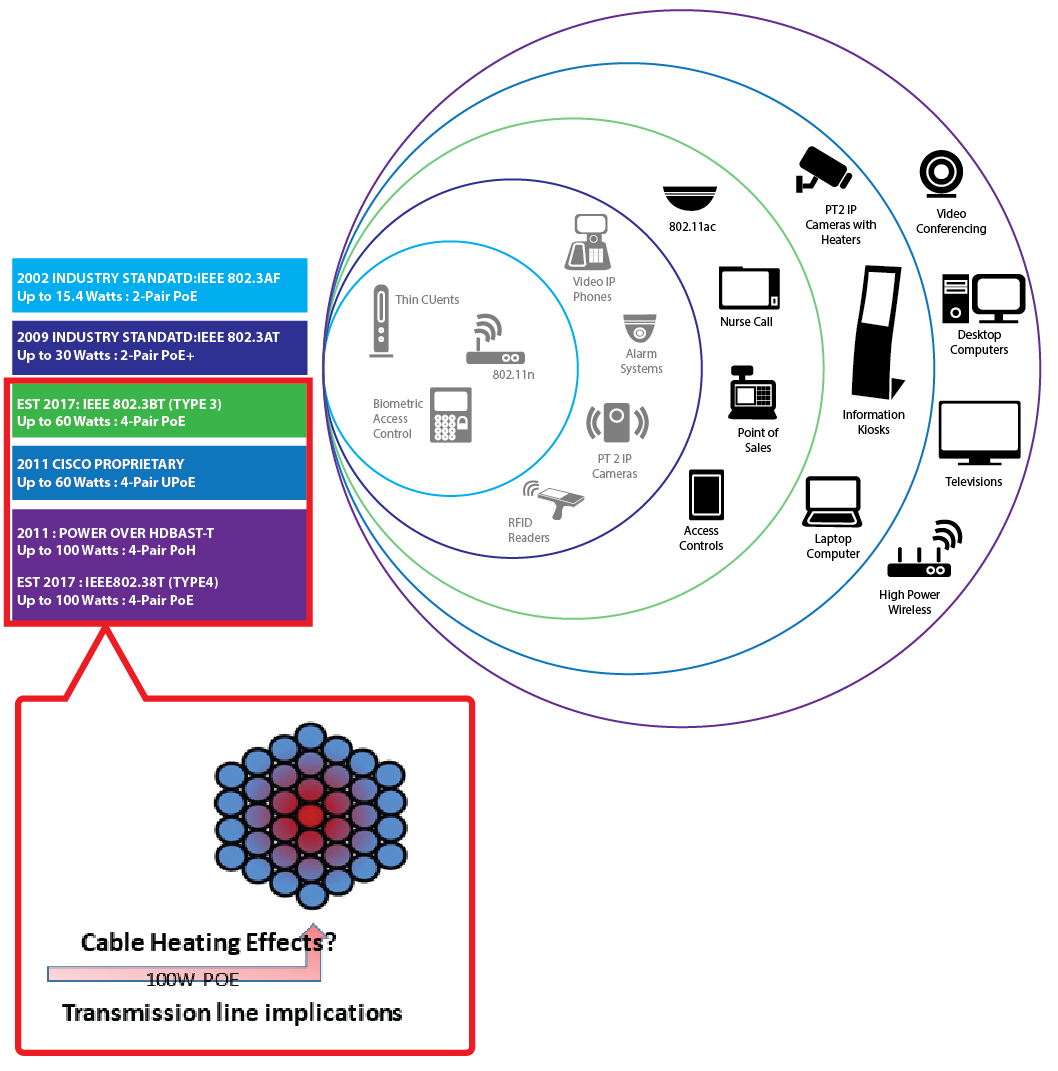
Linkz’s PoE Development
Linkz’s Development
Linkz Structured legacy Category 5e and Category 6 (PVC and LSOH) cables, are designed specifically to meet the challenge of ever-increasing high-powered (<100W) PoE applications up to 100m. Recent testing has demonstrated that whilst our Category 5e and Category 6 cables comfortably meet the emerging standards requirements for 60W and 100W PoE application they may be considered less efficient in terms of Power Lost through the cable when compared to next generation cabling.
Next Generation cable products such as Category 6A, Category 7A and Category 8 have also been designed to support PoE applications up to 100Watts up to distances of 100m (30m in the case of Category 8). Invariably due to the transmission line requirements for these cables they typically use larger conductors as part of their construction. The resultant reduction in conductor DCR with these cables results in more of the transmitted power from the Power Supply Equipment (PSE) arriving at the Powered Device (PD) and thus better power efficiency particularly in larger installations where cables are routinely bundled.
Linkz interprets the IEEE Energy Efficiency requirement as providing cable solutions whereby the Power Drop or losses created over the length of cable installed have to be minimized.
In anticipation of the higher powered Type 3 and Type 4 PoE applications Linkz has sought to understand the implications for cables and in particular what could be done to optimize the cable design and reduce the overall resistive losses which would occur over any given cable length.
Recognizing the effects of heating within cable bundles could be significant Linkz worked through its own structured experimentation to understand and characterize all of its cables. Linkz wanted to proactively engage and best inform its client base with respect to the key aspects of design and installation which needed to be considered. Our development work has been completed in line with the international standardization activities associated with the forthcoming TIA-184-A, IEC 29125 and CLC TR 50174-99-1.

